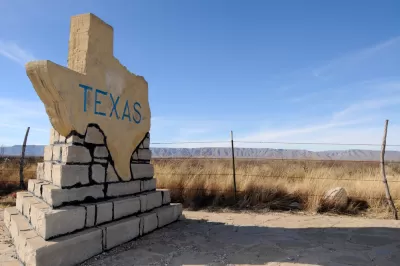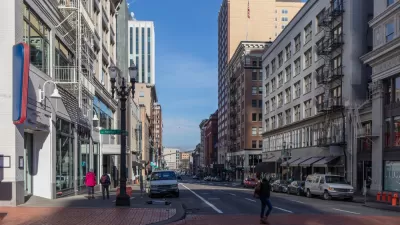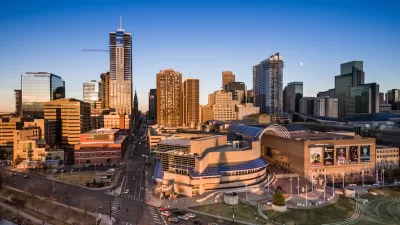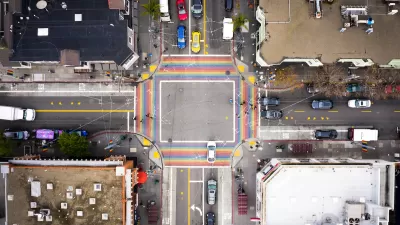State-administered roads in rural parts of Texas have some of the highest speed limits in the state, and see more fatal crashes than urban roads.

Reporting for the Houston Chronicle, Dug Begley outlines the plight of Texas’s rural roads, which, “Despite carrying about 21 percent of the state’s daily miles driven, … represent 34 percent of all highway deaths.”
As Begley writes, “In ‘Keeping Rural Texas Connected,’ researchers found that 251 projects to improve highways outside metro and suburban areas were completed since 2015, at a cost of $7.5 billion, and another 127 valued at $7.2 billion are under construction according to the Texas Department of Transportation.” Yet the Texas Trunk System, “the 30-year-old goal state officials set to make sure every area of Texas with a population of more than 20,000 is connected by a safe, four-lane divided road,” is still short $27.8 billion in backlogged projects.
“One of the challenges to garnering support for rural roads,” according to Texas Transportation Commissioner Alvin New, “is that Texas is becoming more urban, but much of its transportation needs remain decidedly rural.”
Begley writes that “Safety advocates argue Texas highway officials must combat one of the most common reasons for severe crashes — excessive speed. As roads are rebuilt and widened, care needs to be made to not enable faster trips that actually increase risk, they say.” As Jay Crossley, executive director of nonprofit Farm & City, puts it, “In rural, suburban, and urban Texas, the facilities designed for the highest speeds are our state on-system roadways, where there are terrible results of someone driving 70 miles an hour every day.”
FULL STORY: $27B backlog in rural road projects could pose risk to drivers, Texas economy, report finds

Trump Administration Could Effectively End Housing Voucher Program
Federal officials are eyeing major cuts to the Section 8 program that helps millions of low-income households pay rent.

Planetizen Federal Action Tracker
A weekly monitor of how Trump’s orders and actions are impacting planners and planning in America.

Ken Jennings Launches Transit Web Series
The Jeopardy champ wants you to ride public transit.

Washington Legislature Passes Rent Increase Cap
A bill that caps rent increases at 7 percent plus inflation is headed to the governor’s desk.

From Planning to Action: How LA County Is Rethinking Climate Resilience
Chief Sustainability Officer Rita Kampalath outlines the County’s shift from planning to implementation in its climate resilience efforts, emphasizing cross-departmental coordination, updated recovery strategies, and the need for flexible funding.

New Mexico Aging Department Commits to Helping Seniors Age ‘In Place’ and ‘Autonomously’ in New Draft Plan
As New Mexico’s population of seniors continues to grow, the state’s aging department is proposing expanded initiatives to help seniors maintain their autonomy while also supporting family caregivers.
Urban Design for Planners 1: Software Tools
This six-course series explores essential urban design concepts using open source software and equips planners with the tools they need to participate fully in the urban design process.
Planning for Universal Design
Learn the tools for implementing Universal Design in planning regulations.
Heyer Gruel & Associates PA
Ada County Highway District
Institute for Housing and Urban Development Studies (IHS)
City of Grandview
Harvard GSD Executive Education
Toledo-Lucas County Plan Commissions
Salt Lake City
NYU Wagner Graduate School of Public Service





























